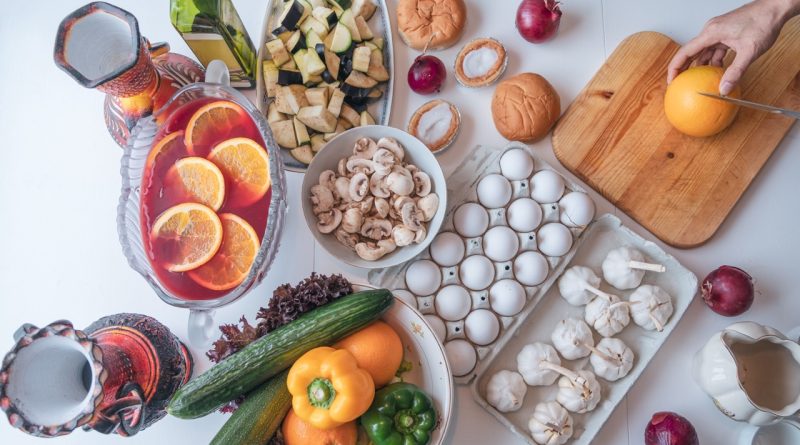How to Make Your Own Homemade Pickles and Preserves
===
Preserving fruits and vegetables through pickling is an age-old tradition that not only extends the shelf life of your produce but also enhances flavors in delightful ways. Whether you want to create tangy pickles or sweet preserves, making your own at home can be a rewarding culinary adventure. This guide will walk you through the essential ingredients, the step-by-step process of pickling, proper canning techniques, and even some creative flavor combinations that are sure to impress your family and friends.
Essential Ingredients for Homemade Pickles and Preserves
When it comes to making pickles and preserves, selecting the right ingredients is crucial. For pickles, you will need fresh cucumbers, vinegar (white or apple cider), water, and salt. The salt is vital as it aids in the fermentation process and enhances the overall flavor. Additional spices such as dill, garlic, and peppercorns can be added for extra zest and complexity. For preserves, fresh fruits like strawberries, peaches, or apricots are ideal, along with sugar and lemon juice to help balance the sweetness and acidity.
The quality of your ingredients can significantly impact the final product. Always choose ripe, unblemished produce for the best results. Organic fruits and vegetables may be preferable as they are typically free from pesticides and chemicals. Additionally, consider using non-iodized salt, as iodized salt can lead to cloudiness in your pickles. For preserves, using the right kind of sugar is key; opt for granulated sugar for a classic flavor.
Lastly, don’t overlook the importance of proper storage containers. Glass jars with airtight lids are ideal for both pickling and preserving as they create a seal that helps maintain freshness. A canning kit, including a jar lifter and a funnel, can also streamline the process and ensure safety during handling.
Step-by-Step Process for Pickling Your Favorite Vegetables
To begin pickling, first wash your chosen vegetables thoroughly. For example, cucumbers should be scrubbed under running water to remove any dirt. Next, cut them into your desired shape—whole, spears, or slices. Prepare your brine by combining vinegar, water, and salt in a pot and bringing it to a boil. This mixture will infuse your vegetables with flavor while also acting as a preservative.
Once the brine is ready, pack your vegetables tightly into sterilized jars, leaving about half an inch of headspace. You can add spices and flavorings to the jars at this stage, such as garlic cloves, dill sprigs, or mustard seeds, to enhance the taste. Pour the boiling brine over the vegetables, ensuring they are fully submerged. Seal the jars with lids while the contents are still hot to create a vacuum seal as they cool.
Let the jars cool to room temperature before refrigerating. For best results, allow your pickles to sit for at least 48 hours to develop their flavor. If you are interested in long-term storage, consider following a water bath canning method to preserve them for months, which involves submerging the sealed jars in boiling water for a specified time.
Tips for Proper Canning and Preserving Techniques
When it comes to canning and preserving your homemade pickles and preserves, hygiene is paramount. Always start with clean, sterilized jars and lids to prevent contamination. To sterilize your jars, submerge them in boiling water for ten minutes or run them through a hot cycle in the dishwasher. This step ensures that any bacteria or pathogens are eliminated before sealing your products.
Additionally, always check the seal on your jars after they have cooled. A properly sealed jar will have a concave lid that doesn’t pop when pressed. If a jar hasn’t sealed correctly, refrigerate and consume the contents within a few days. For those interested in preserving food for the long term, familiarize yourself with regional canning guidelines to ensure safety and success.
Finally, don’t forget to label your jars with the contents and the date of preservation. This practice not only helps keep your pantry organized but also allows you to track the freshness of your homemade goods. Most pickles can last up to one year when stored in a cool, dark place, while preserves generally have a shorter shelf life and should be consumed within a year for the best flavor and quality.
Creative Flavor Combinations for Unique Pickles and Preserves
Experimenting with flavor combinations can elevate your pickles and preserves to a whole new level. For pickles, consider adding unexpected ingredients like chili flakes for a spicy kick, or ginger slices for an aromatic touch. Infusing herbs such as basil or thyme can also create a refreshing twist, perfect for gourmet salads or charcuterie boards. Another delightful option is to incorporate citrus peels into the brine, which can add brightness and complexity to the flavor profile.
When it comes to preserves, think beyond the traditional strawberry or peach. Combine fruits for unique blends, such as raspberry-peach or mango-pineapple, to create a deliciously fruity spread. You can also add spices such as cinnamon or vanilla to the cooking fruit for a warm, comforting flavor. For an adventurous twist, consider using herbs like rosemary or thyme in your preserves for a savory-sweet combination.
Lastly, don’t shy away from international flavors. Experiment with pickling recipes from different cultures, such as Korean kimchi or Indian pickles, which often use a variety of spices and ingredients uncommon in Western recipes. These innovative combinations not only add diversity to your pantry but also provide a conversation starter at your next gathering.
===
Making your own homemade pickles and preserves is a delightful way to preserve the bounty of seasonal fruits and vegetables while adding unique flavors to your meals. With the right ingredients and techniques, anyone can embark on this culinary journey, creating tasty and visually appealing jars that are perfect for gifts or personal enjoyment. So gather your favorite produce, unleash your creativity, and enjoy the satisfaction of opening a jar of your homemade delights throughout the year!
